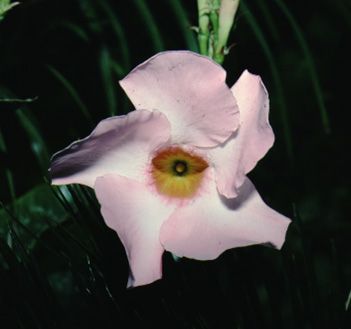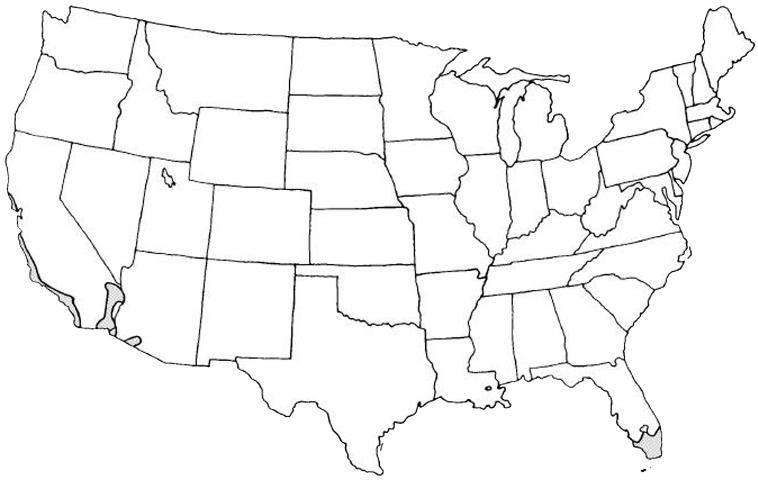Introduction
Quickly twining around any support, or pinched to create a handsome hanging specimen, 'Alice Dupont' allamanda is an attractive evergreen vine endowed with beautiful, deep pink, funnelform blooms up to 4 inches wide and 2 inches long, set off against dark green, large evergreen leaves. It may be the most popular cultivar of mandevilla.

Credit: Edward F. Gilman, UF/IFAS
General Information
Scientific name: Mandevilla splendens 'Alice Dupont'
Pronunciation: man-dev-VILL-luh SPLEN-denz
Common name(s): 'Alice Dupont' allamanda
Family: Apocynaceae
Plant type: vine
USDA hardiness zones: 10 through 11 (Figure 2)
Planting month for zone 10 and 11: year round
Origin: not native to North America
Invasive potential: not known to be invasive
Uses: hanging basket; cascading down a wall
Availability: generally available in many areas within its hardiness range

Credit:
Description
Height: depends upon supporting structure
Spread: depends upon supporting structure
Plant habit: spreading
Plant density: dense
Growth rate: moderate
Texture: coarse
Foliage
Leaf arrangement: opposite/subopposite
Leaf type: simple
Leaf margin: undulate
Leaf shape: elliptic (oval)
Leaf venation: pinnate
Leaf type and persistence: evergreen
Leaf blade length: 4 to 8 inches
Leaf color: green
Fall color: no fall color change
Fall characteristic: not showy
Flower
Flower color: pink
Flower characteristic: year-round flowering; pleasant fragrance
Fruit
Fruit shape: elongated
Fruit length: unknown
Fruit cover: dry or hard
Fruit color: brown
Fruit characteristic: inconspicuous and not showy
Trunk and Branches
Trunk/bark/branches: typically multi-trunked or clumping stems
Current year stem/twig color: green
Current year stem/twig thickness: medium
Culture
Light requirement: plant grows in full sun
Soil tolerances: slightly alkaline; clay; sand; acidic; loam
Drought tolerance: moderate
Soil salt tolerances: poor
Plant spacing: 36 to 60 inches
Other
Roots: not applicable
Winter interest: plant has winter interest due to unusual form, nice persistent fruits, showy winter trunk, or winter flowers
Outstanding plant: plant has outstanding ornamental features and could be planted more
Pest resistance: no serious pests are normally seen on the plant
Use and Management
It looks particularly attractive twining along a fence or over an arbor or mail box. Foliage and flowers cluster toward the top of the fence or arbor several years after planting. Regularly heading back several of the twining stems each year will help generate new foliage and flowers near the ground. Rapid growth and profuse flowering have helped allamanda become popular as an annual in cooler regions where freezing temperatures kill the plant to the ground.
Growing best in full sun, allamanda needs well-drained soil and should receive ample moisture during the growing season. Flowers appear in greatest abundance during the summer, but some appear all year in hardiness zones 10 and 11.
Pests and Diseases
No pests or diseases are of major concern. Plants are occasionally bothered by scale and mealybugs.